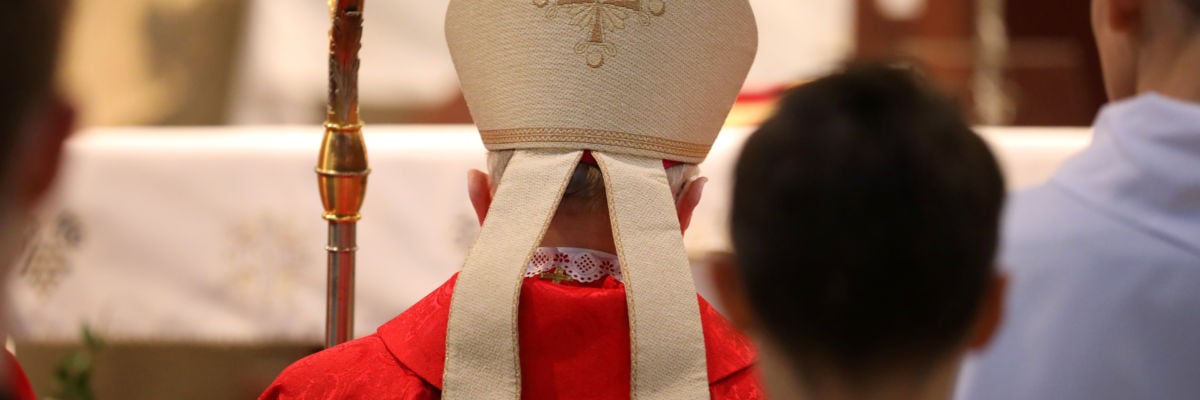
Question:
Answer:
This verse does not say that Timothy was ordained by priests. At most, it says that priests laid their hands on him at the time of his ordination, but this does not mean that it was they who conferred the sacrament upon him.
When someone is ordained to the priesthood, the bishop imposes hands on the candidate, followed by any already-ordained priests who are present. These impositions of hands have different significance. The bishop places his hands on the candidate to impart the Holy Spirit to him for ministry, to confer on him the sacrament of holy orders. When the new priest’s colleagues lay their hands on him, it is not to confer the sacrament, but to symbolize their union with him in the priesthood and their sharing a common Spirit through the sacrament.
This explanation of the two impositions can be found as early as the Apostolic Tradition of Hippolytus, which was written in the early 200s.
In 2 Timothy 1:6 Paul states, “Hence I remind you to rekindle the gift of God that is within you through the laying on of my hands.” Timothy’s ordination was received through the laying on of Paul’s hands, and Paul had the powers of a bishop as part of his powers as an apostle. Thus someone of episcopal rank ordained Timothy. If 1 Timothy 4:14 means that presbyters (priests) laid their hands on Timothy, it was the same situation as modern priests laying their hands on a candidate after the bishop actually confers the sacrament.
Yet there is a question whether 1 Timothy 4:14 even refers to priests laying their hands on Timothy. In most modern Bible translations the verse is rendered this way: “Do not neglect the gift you have, which was given you by prophetic utterance when the council of elders [presbyters, priests] laid their hands upon you,” but the verse can also be translated this way: “Do not neglect the gift you have, which was given to you . . . with the laying on of hands for the presbyterium [priesthood].” In other words, the laying on of hands was to make Timothy a member of the priesthood; it was not the priests who laid their hands on him.


